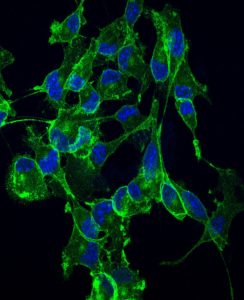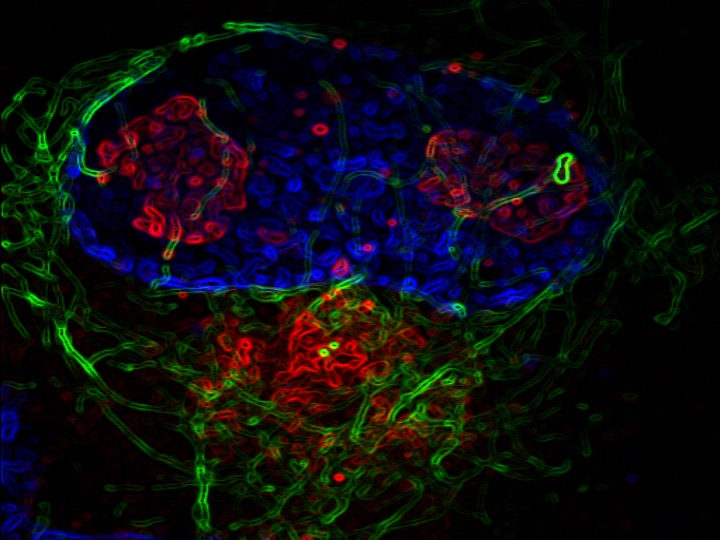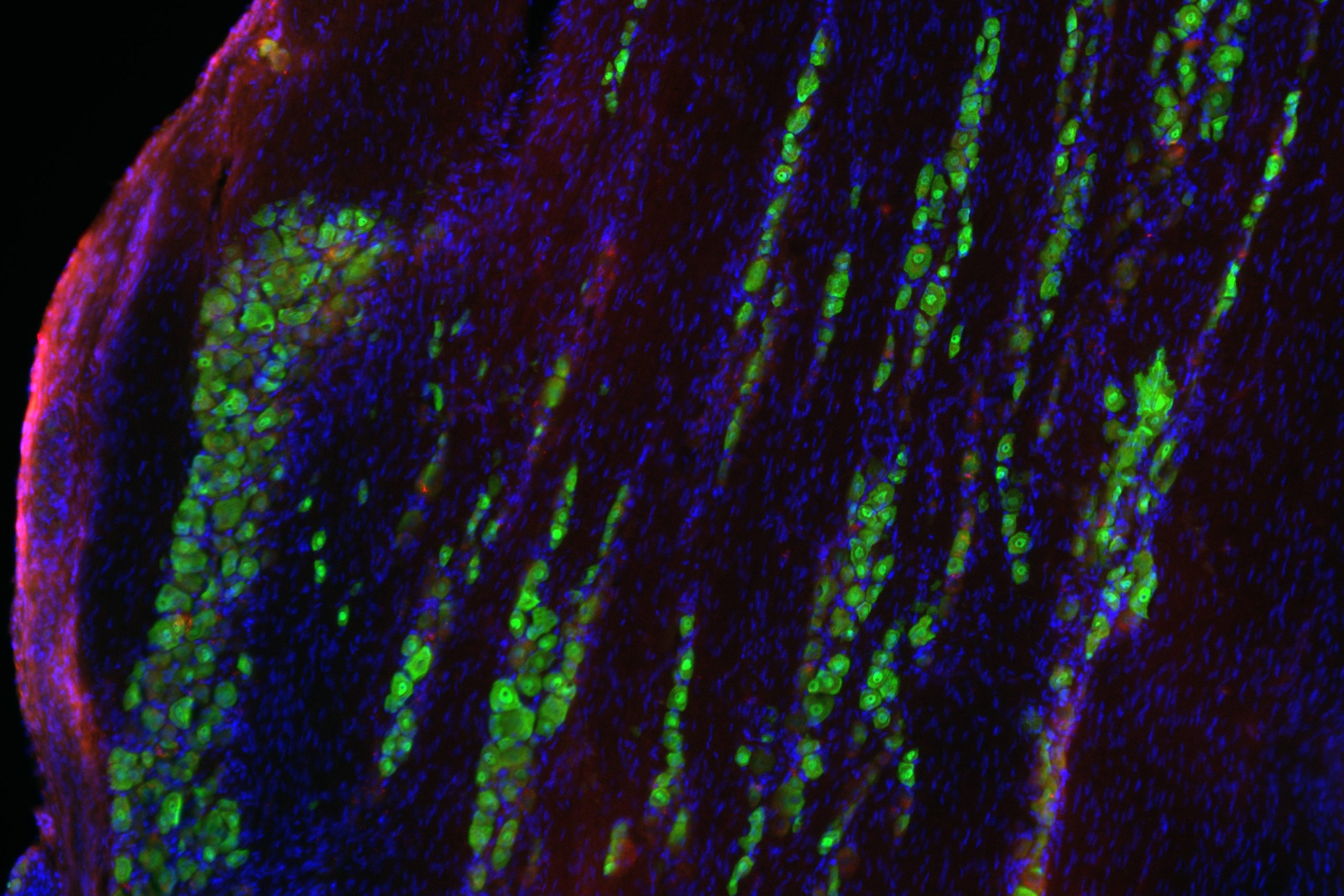
Northwestern Medicine scientists have discovered that the protein FMRP — the loss of which leads to Fragile X syndrome — is a novel reader of RNA methylation in regulating neural stem cell differentiation.
The findings, published in Cell Reports, suggest that defects in this RNA modification process may contribute to Fragile X syndrome, the most common genetic cause of intellectual disability.
The study was led by Yongchao Ma, PhD, associate professor of Pediatrics and a member of the Stanley Manne Children’s Research Institute at Ann & Robert H. Lurie Children’s Hospital of Chicago. Brittany Edens, a graduate student in the Northwestern University Interdepartmental Neuroscience Program (NUIN), was the first author of the paper.
A central question in biology is how genetic information translates from DNA to RNA to proteins. Within this process, reversible modifications of both DNA and protein — called methylation — are well known to play a role in the regulation of gene expression. It wasn’t until more recent years, however, that scientists discovered RNA can also be methylated.
M6A — the methylation of RNA on N6-adenosine — is the most prevalent reversible modification of RNA, and there has now been much interest in understanding the role of m6A in a number of key biological processes.
In the current study, the scientists discovered that FMRP binds to m6A, and in doing so, regulates the transport of m6A-modified RNA from the nucleus of the cell into the cytoplasm — an essential step in protein expression.
FMRP is an RNA-binding protein encoded by the FMR1 gene; mutations in FMR1 have been shown to result in Fragile X syndrome, a genetic disorder that causes intellectual disability, behavioral and learning challenges.

“We found that FMRP, very unexpectedly, turns out to be a novel reader of RNA methylation,” said Ma, also an associate professor of Physiology and in the Ken and Ruth Davee Department of Neurology.
Only a few readers of m6A have previously been identified, and all belonged to a related protein family, distinct from FMRP. Furthermore, this is one of the first examples demonstrating that FMRP plays a role in regulating nuclear-cytoplasmic transport of RNA, Ma added.
Importantly, the findings also provide new insights into the origins of Fragile X.
In an animal model, the scientists demonstrated that FMRP’s role in facilitating the export of m6A-modified RNA from the nucleus is critical for the proliferation and differentiation of neuronal stem cells.
Mice that were genetically engineered to either lack the FMR1 gene or m6A modification both showed accumulation in the nucleus of many RNAs required for normal brain development. “Simply put, whether you’re missing FMRP or whether you’re missing m6A, it ultimately results in a drastic delay in brain development,” Edens said.
Although the study was not translational, Ma and Edens note that the findings may point to important new avenues of investigation in Fragile X.
“Most people who are working on Fragile X syndrome are looking at mature neurons, which are much further out in the developmental timeframe than the defect we’re identifying,” Edens said. “This suggests that therapeutic targets might be earlier occurring than what a lot of the field is currently thinking.”
Moving Forward on FMRP

The research focus of the Ma laboratory is not on Fragile X syndrome, but in fact Spinal Muscular Atrophy, a pediatric motor neuron disorder and the leading genetic cause of infant mortality.
It was only when the laboratory stumbled upon the discovery that the SMN protein — the expression of which is disrupted in Spinal Muscular Atrophy — interacts with FMRP that they set down the path of the current study.
In future investigations, the team will work with collaborators at Northwestern, the University of Chicago and other institutions to further explore the link between the FMRP and SMN proteins, their role in recognizing RNA methylation, and how defects in these processes lead to disease.
Edens was awarded the 2018 Mary J.C. Hendrix Outstanding Graduate Student Award from the Stanley Manne Children’s Research Institute in recognition of her research accomplishments.
The study was supported by grants from the National Institutes of Health (NIH) R01NS094564, R21NS106307, The Hartwell Foundation, the Chicago Biomedical Consortium, and Cure SMA.






